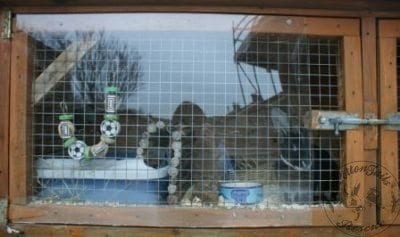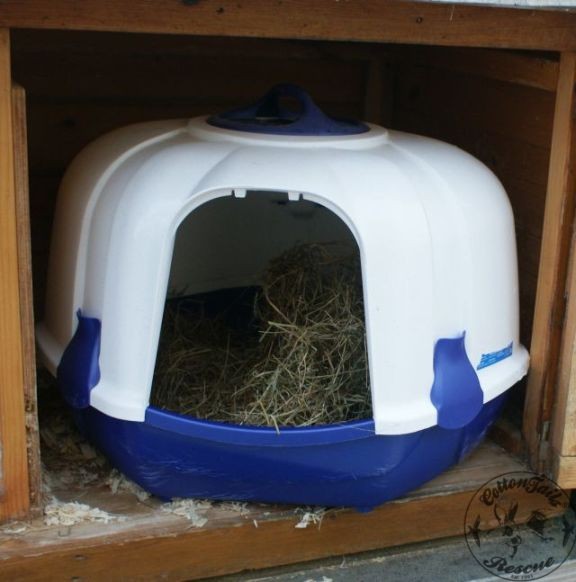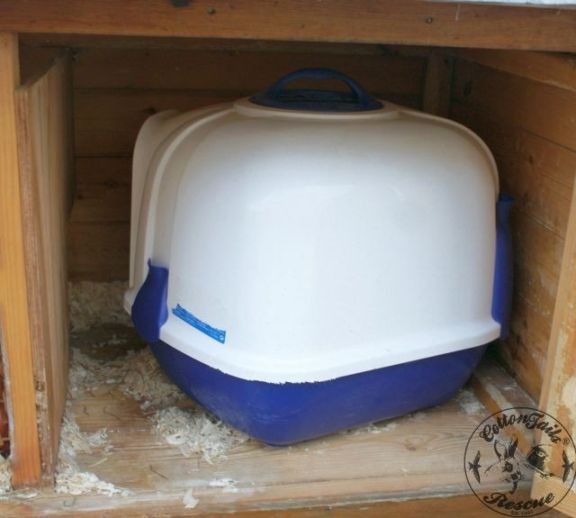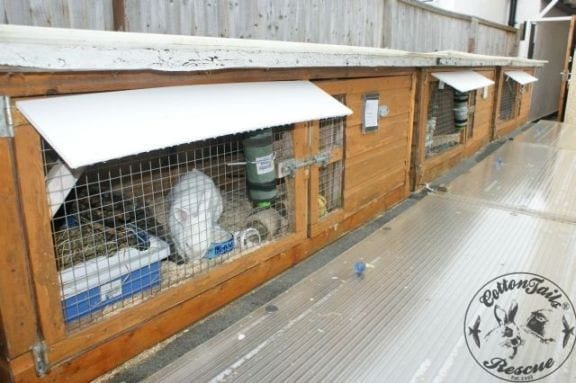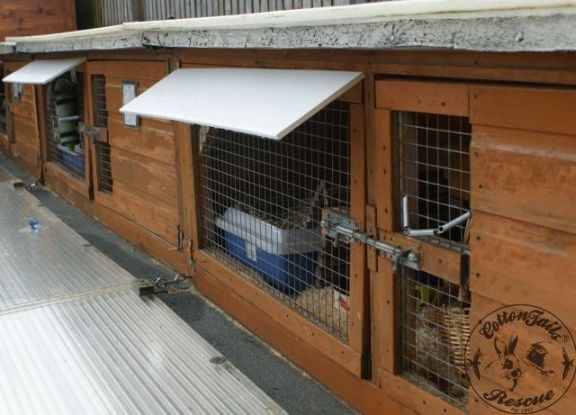Winter Topical Tips
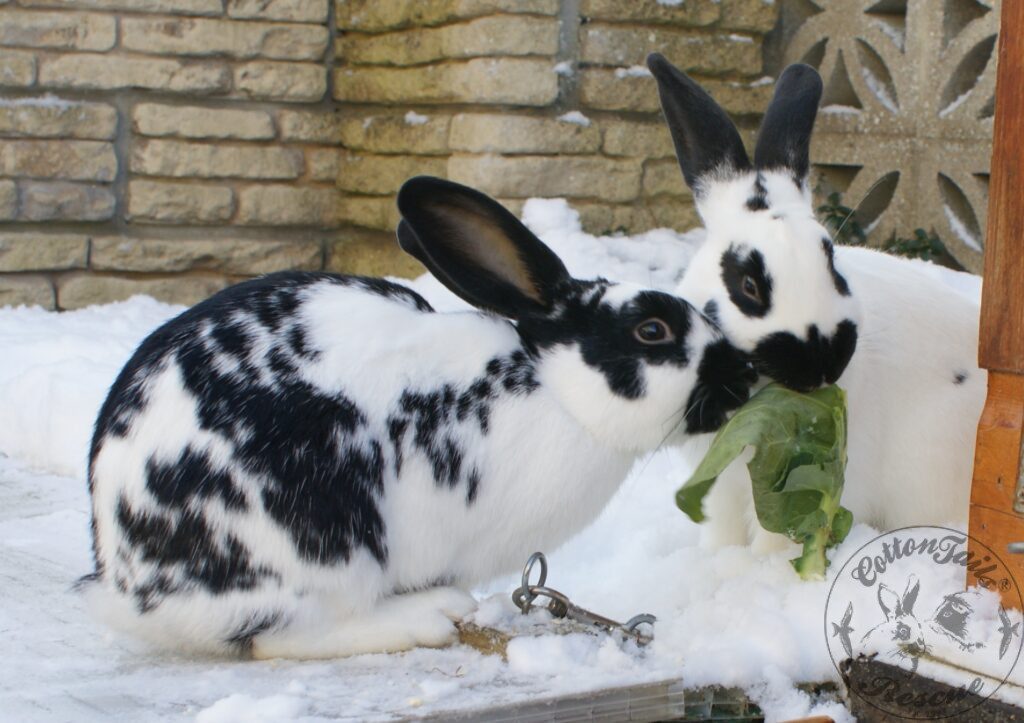
If your rabbit has a water bottle, be aware that the bit that freezes first is the spout. Although you may think that the water is not frozen in the bottle, there is a chance that the rabbit will not be able to drink out of it due to the ball bearing at the end being frozen solid. On this basis, it may be somewhat pointless to put insulation around the bottle as although you may stop the bottle from freezing, and you will not be able to protect the spout. Insulated bottle covers have their uses as long as you know the limitations. Large water bowls can be helpful as an alternative, but even these can freeze and can be tipped over or messed up by the rabbits when they move around.
On very cold days when the weather is unlikely to thaw, you may need to provide water in a bowl or position the bottle inside the hutch to stop it from freezing so rapidly. Bottles can be attached to the inside of the hutch by fixing a plastic plant pot to the inside wall and making a hole in the bottom for the spout to come through. Bear in mind that some rabbits will think it funny to chew the pot, so make sure it is of a substantial variety! It is always helpful to have two water bottles anyway, making it easy to swap on a fresh bottle, even if you are in a hurry in the morning.
Whilst I am aware that hot water can freeze quicker than cold water (the Mpemba effect), I find that the spout still seems to freeze less quickly if the bottle is filled with hot water, but the difference is only marginal so you still need to keep a close watch on the situation. Some people suggest putting a few drops of glycerin in the water to stop it from freezing. I have not found that it works very well, and it has the disadvantage of affecting the action of the ball bearing in the spout and even affecting the taste, which may put the rabbit off drinking.
Suppose you are worried that your rabbit’s hutch is not as warm as it should be during a cold winter. In that case, you can insulate it by buying bubble wrap from a garden centre, fixing it on the sides and back on the outside, and covering it with tarpaulin or plastic sheeting. This can be removed in the spring. Do not be tempted to completely cover the front as it is essential that air is allowed to flow in, and you are better off trying to site the hutch away from prevailing winds so the rain does not blow in anyway. If you feel that you have to cover the front (remember that they are rabbits and are very hardy), then cover no more than half of the wire door. An experienced rabbit enthusiast sent in the following:
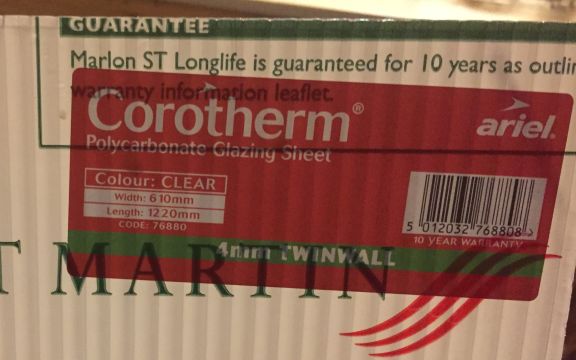
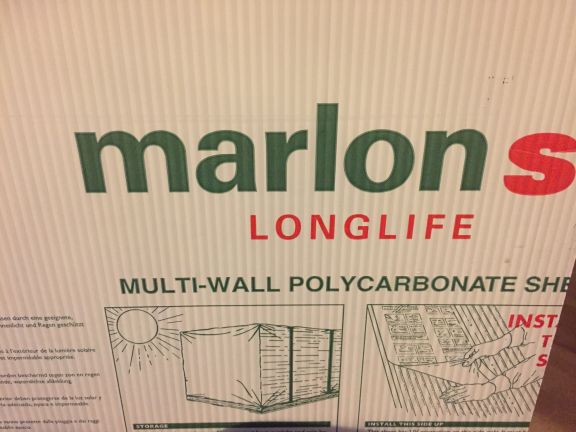

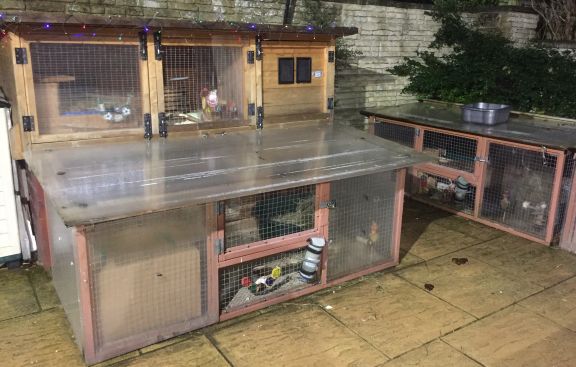
Tree pruning is often done in late autumn or winter when the leaves have come down, so use the branches for rabbits and guinea pigs, as they love to strip the bark off them. We use apple and willow branches, but many other trees are safe. Do check online first to ensure your tree is safe to use. Also, ensure that the tree has not been sprayed with pesticide, as this could make a rabbit or guinea pig ill.
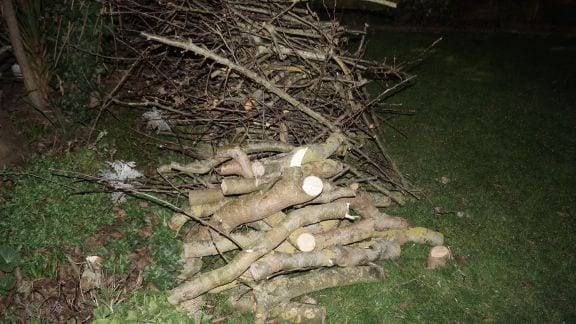
Spring

Do not be surprised if your bunny changes their behaviour a bit at this time of year, as even neutered rabbits still react to the lengthening daylight, as this is the cue in the wild for the onset of breeding. This can trigger fighting between predominantly female/female pairs, but if you can nurse them through the first few months of the year, they may settle down again, so long as no long-term damage is done. This is also the time of year to either cover the hutch felting with white roofing plastic or paint it white, as there is no doubt that a white roof keeps the inside of the hutch cooler in the hot weather. You can coat the inside with greenhouse shading if you have a plastic lid on the run. If the rabbits are kept in a greenhouse or conservatory, remember that the heat builds up dramatically on a warm day, with often fatal results.
Summer
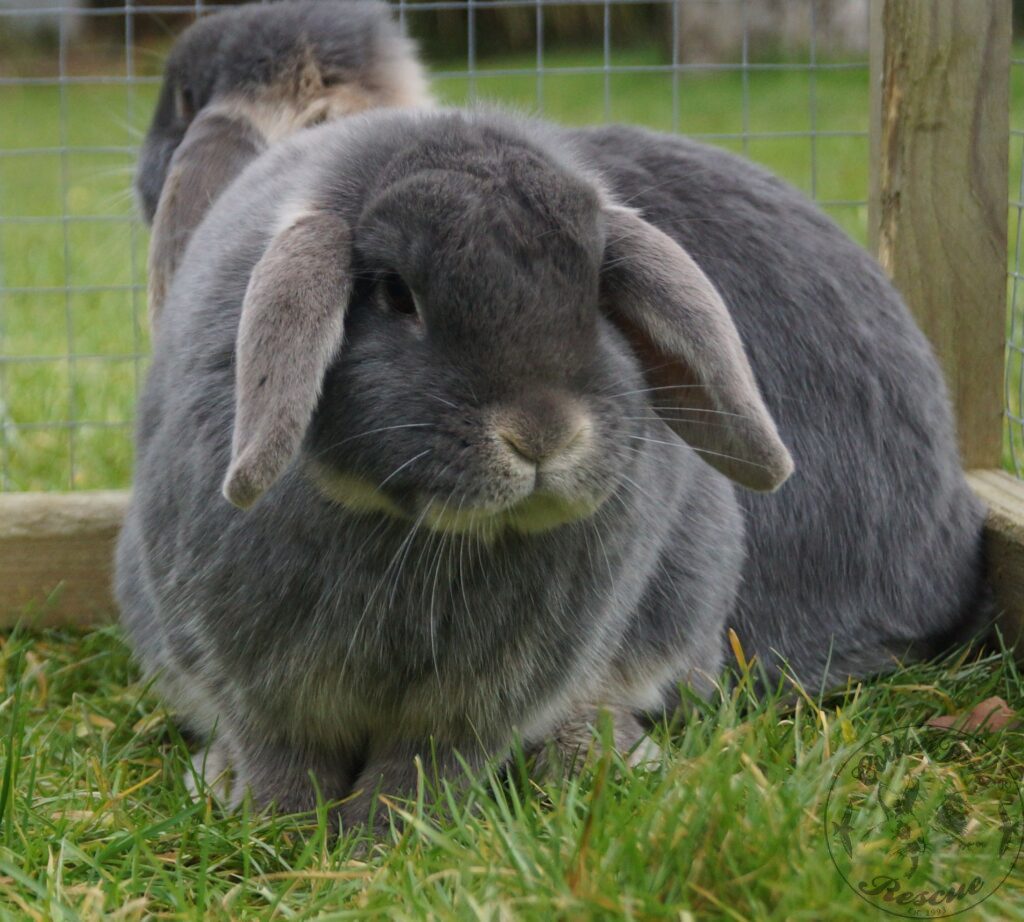
The main risk at this time of year is heat stroke and flystrike, so make sure your rabbit’s accommodation is not in a sun trap where the rabbit can’t move away into the shade. Also, ensure the diet is correct so there are no soft droppings or dirty bottoms. See the rabbit care article on the website for helpful hints on dealing with such problems. Make sure that fresh water is always available, and be aware that a rabbit will drink more on a hot day, especially in the evening.
Here is some helpful information regarding keeping rabbits cool in the hot weather:
“Hi, Mairwen. I am following up on an email between us back in March/April regarding cooling rabbit housing. You asked me to let you know how I got on… Well, it took a lot of research and phone calls but it eventually decided on a portable air con unit called the SILENT 12, manufactured by ELECTRIQ. MY 2 rabbits live in a 10 x 8′ shed with a large run attached and a little door that can be opened or closed (i.e. at night). The a/c unit is proving excellent in this hot weather and is quiet enough not to worry the buns. However, it does need to be externally vented via ‘elephant tubing’. It is easy to use. Cost-wise, it is beyond what many people could afford, but my shed is in direct sunlight with no shade. From appliancesdirect.co.uk it cost £300 incl p&p. It is also a heater and a dehumidifier. A simple fan would not suffice during summer weather… I also have an ice block ( old water-filled plastic milk bottle) that they can lie near. I hope this helps/ is helpful. Kind regards, Julia.”
Early Autumn
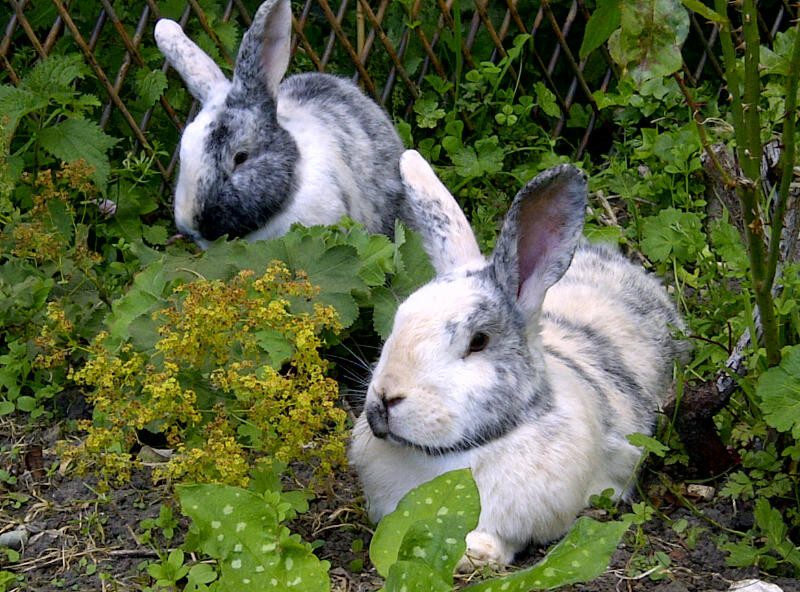
If your rabbit or guinea pig runs around the garden at this time of year, there will be the extra hazard of fallen fruit such as apples or leaves. Both can be a real problem, especially for the rabbit’s fragile digestive system! Now is also the time to get your hutch and run ready for the winter weather. Thoroughly coat the outside of the wood with a good quality pet-friendly weatherproofing product. Also, check that the roofing felt is still sound and not letting in rain and that the sides and back are good. Oil any hinges and catches and make all those little repairs that you have been putting off for another day.
Vaccinations are essential, whatever the time of year. The new combined vaccine is given once a year and protects the rabbit against all three diseases – myxomatosis, RHD1 and RHD2. There have been several cases of house rabbits catching myxomatosis and RHD, so don’t think that your rabbit is not at risk just because they live in the house. The current thinking is that it can take three weeks before the vaccination becomes fully effective against the disease.
YouTube Links
You will find many embedded film clips throughout the site to illustrate various points raised within an article or perhaps to demonstrate a particular rabbit or guinea pig available for adoption. You can also go through all of the films on YouTube if you go on to the Cottontails account on YouTube (type in my name, Mairwen Guard, on the search box within YouTube itself). These films also include some non-rabbit videos, as I am a musician when I wear my other hat! Below is an example of one of the bunny films.



